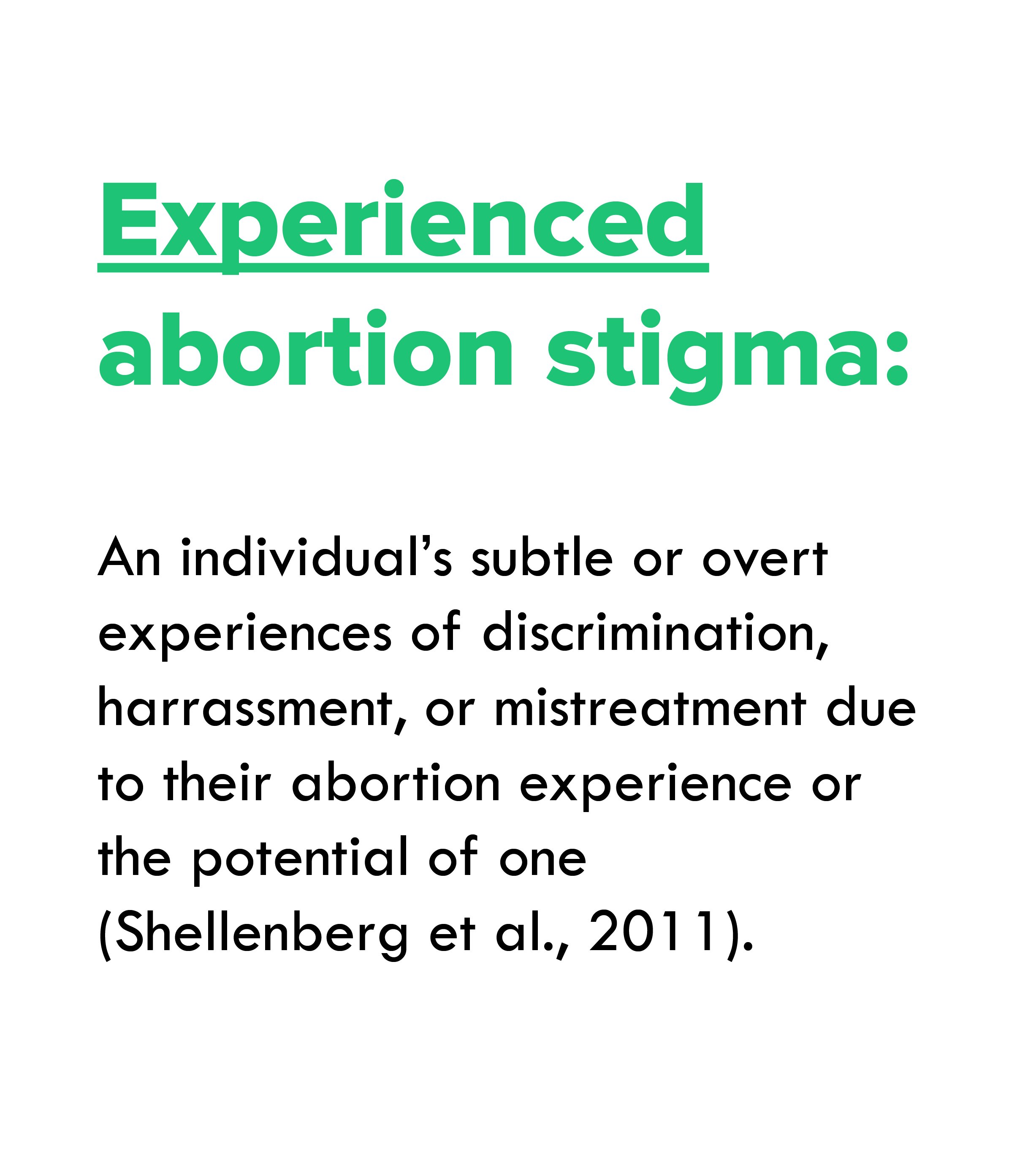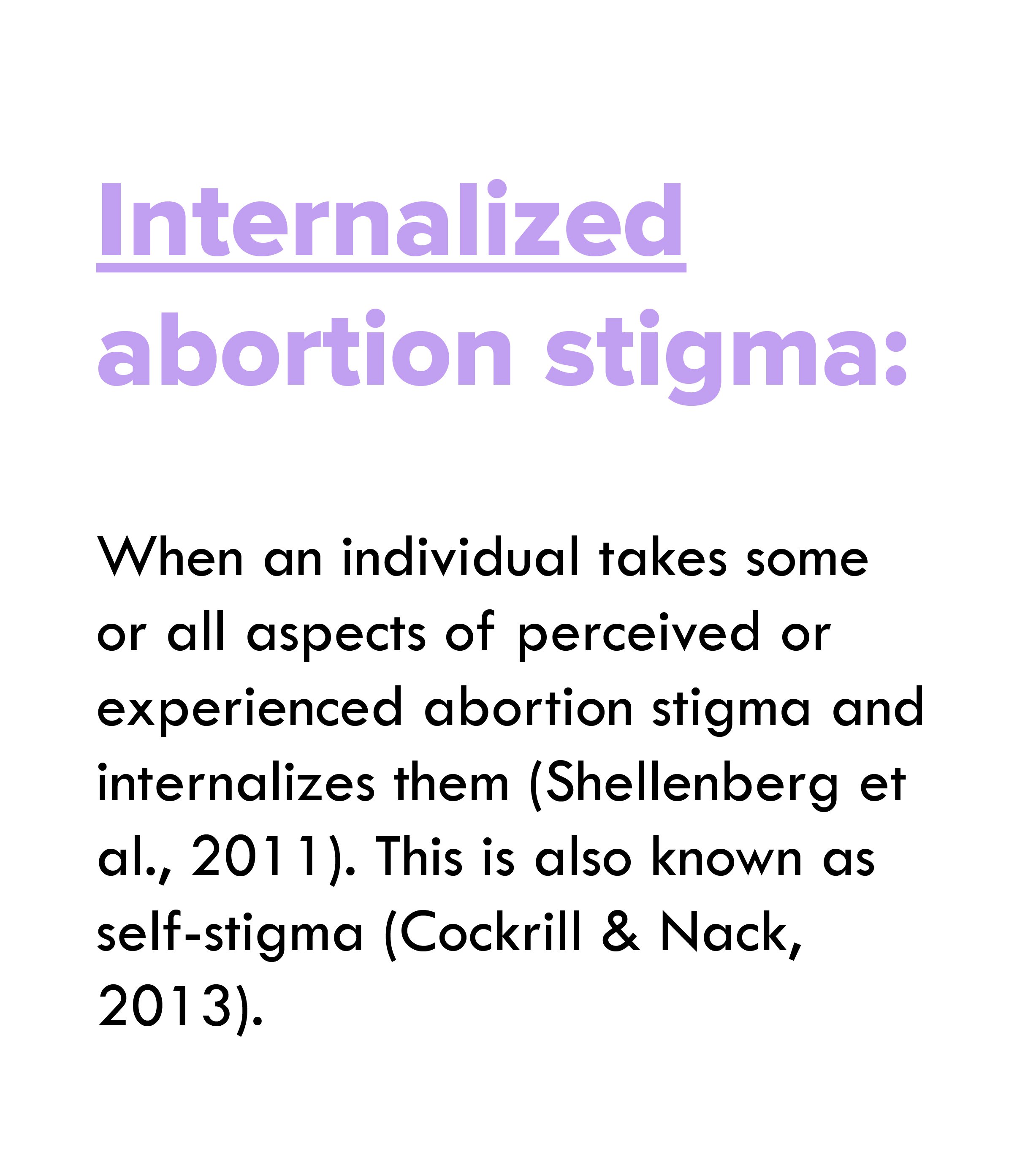
What is
Abortion Stigma?
The research on the psychological effects of abortion is limited, but this literature has identified a significant factor, abortion stigma.

Abortion stigma:
“A negative attribute ascribed to women* who seek to terminate a pregnancy that marks them, internally or externally, as inferior to ideals of womanhood”
(Kumar et al., 2009, p.628).
The abortion itself is not the problem. Abortion stigma can have negative mental health outcomes (Major et al., 2009). Abortion stigma can have harmful, and sometimes fatal, physical and psychological consequences (O’Donnell et al., 2018).
*Most abortion research and reproductive healthcare has focused on heterosexual cisgender women. The transgender, nonbinary, and gender-expansive population who are intersex, or were assigned female at birth, have abortions, experience pregnancies, and need as comprehensive sexual and reproductive healthcare (Moseson et al., 2020). Additionally, cisgender sexual minority women (non-heterosexual women) are often overlooked in abortion research (Moseson et al., 2020).
The 3 Domains of Stigma




Ecological Model of Abortion
(Hessini, 2014) (LeTourneau, 2016)
The Ecological Model of Abortion is a framework helps us identify abortion stigma on all societal and systemic levels. This framework proves that abortion stigma is linked with other forms of oppression such as sexism, racism, and socioeconomic inequality, and intersects with both stereotyping and prejudice (Hessini, 2014)(LeTourneau, 2016).

Framing Discourses / Mass Media and Culture

The 1st outermost level is the language that shapes public opinion and where certain strategies are disseminated which control the dominant discourse surrounding abortion, and how much visibility or invisibility abortion and abortion stigma are given in popular culture.
(LeTourneau, 2016)

Governmental / Structural / Legal

The 2nd level consists of macro societal structures. Many of the United States’ laws and policies, especially on the state level, bolster and support abortion stigma in society’s core structures. Abortion stigma and gender discrimination can be perpetuated and cemented in policy and law, and is pervasive on a global scale.
(LeTourneau, 2016)(Kumar et al., 2019)

Organizational / Institutional

The 3rd level of organizational and institutional influences outside of government may also perpetuate and create abortion stigma through their structure, policies, and norms.
This includes health facilities and medical education organizations.
(LeTourneau, 2016)(Kumar et al., 2019)

Abortion stigma is perpetuated by abortion care being mostly segregated and seen as separate from other medical or reproductive care
(LeTourneau, 2016)(Kumar et al., 2019).

In medical school,
<27%
OBGYN residency programs in the U.S. require first-trimester abortion training
(Kumar et al., 2019)

Community

Within the 4th level of smaller or localized communities, abortion stigma is related to status loss for the individual who seeks an abortion.
This can be highly dangerous if an individual’s access to financial resources or mobility is limited with their community.
(LeTourneau, 2016)(Kumar et al., 2019)

Individual

At the 5th level of the individual, this is the individual’s personal experience of abortion stigma, including perceived, experienced, and internalized abortion stigma.
This includes the relationships between deciding to disclose one’s abortion, or maintaining secrecy.
(LeTourneau, 2016)(Kumar et al., 2019)








